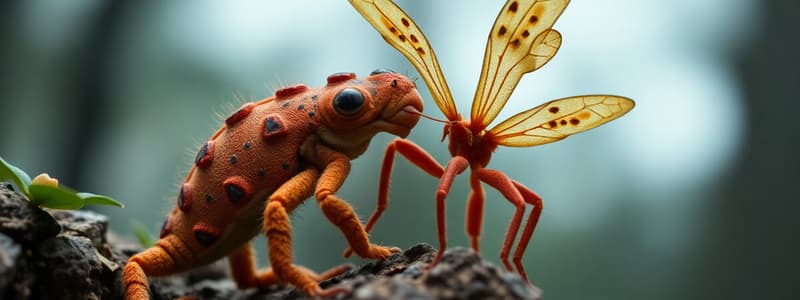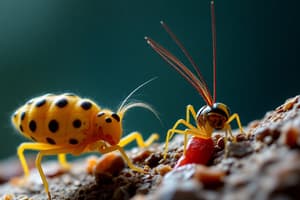Podcast
Questions and Answers
What is the primary characteristic of commensalism?
What is the primary characteristic of commensalism?
- Both species benefit from the interaction
- One species harms the other while remaining unaffected
- One species benefits while the other is unaffected (correct)
- Neither species is affected by the interaction
In amensalism, the species that is harmed benefits from the interaction.
In amensalism, the species that is harmed benefits from the interaction.
False (B)
What is the term used for the species that is negatively affected in amensalism?
What is the term used for the species that is negatively affected in amensalism?
Amensal
In commensalism, the benefited species is known as the ______.
In commensalism, the benefited species is known as the ______.
Match the following terms with their definitions:
Match the following terms with their definitions:
Flashcards
Commensalism
Commensalism
One species benefits while the other is neither harmed nor helped.
Commensal species
Commensal species
The species that benefits from the relationship.
Amensalism
Amensalism
One species inhibits the growth or survival of the other, while the inhibiting species remains unaffected.
Amensal
Amensal
Signup and view all the flashcards
Allelopathic substances
Allelopathic substances
Signup and view all the flashcards
Study Notes
Commensalism (+/0)
- Necessary interaction for one species to survive
- One species benefits, one is unaffected
- Commensal species
- Other species could compete for resources
Amensalism (-/0)
- One species inhibits growth or survival of another
- One species harmed, second species unaffected
- One species produces compounds which harm another
- Example: allelopathy (one plant releases chemicals that harms other plant growth)
Studying That Suits You
Use AI to generate personalized quizzes and flashcards to suit your learning preferences.




